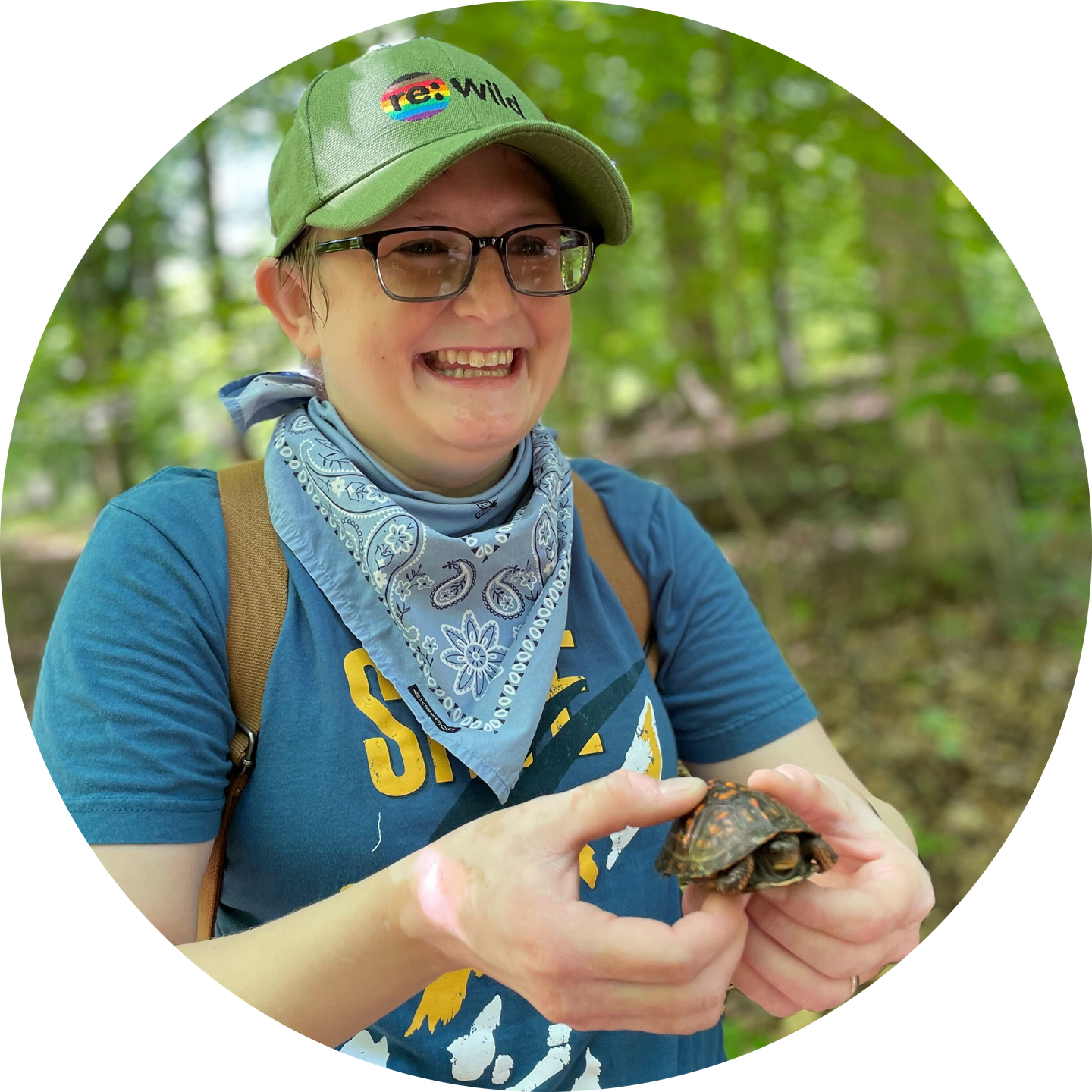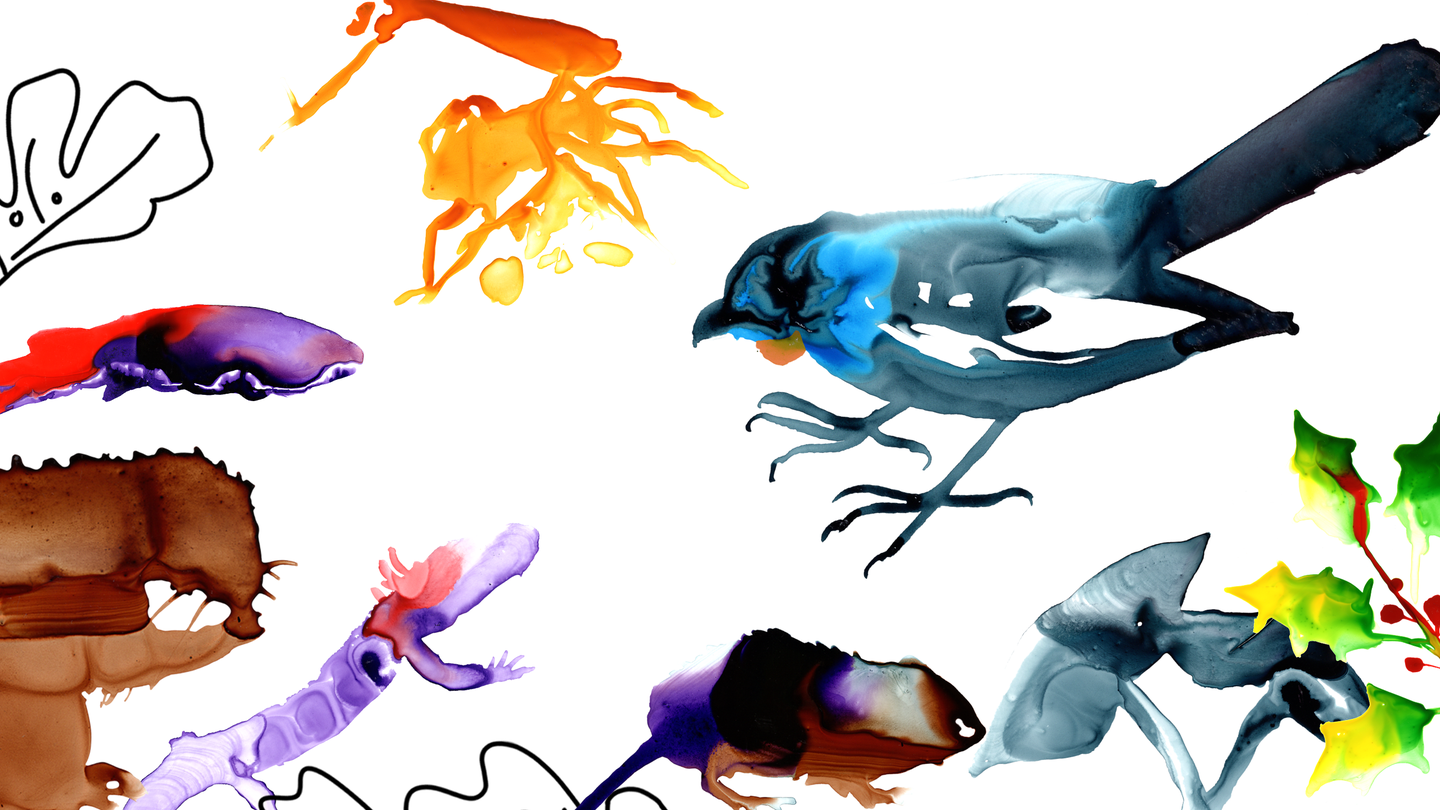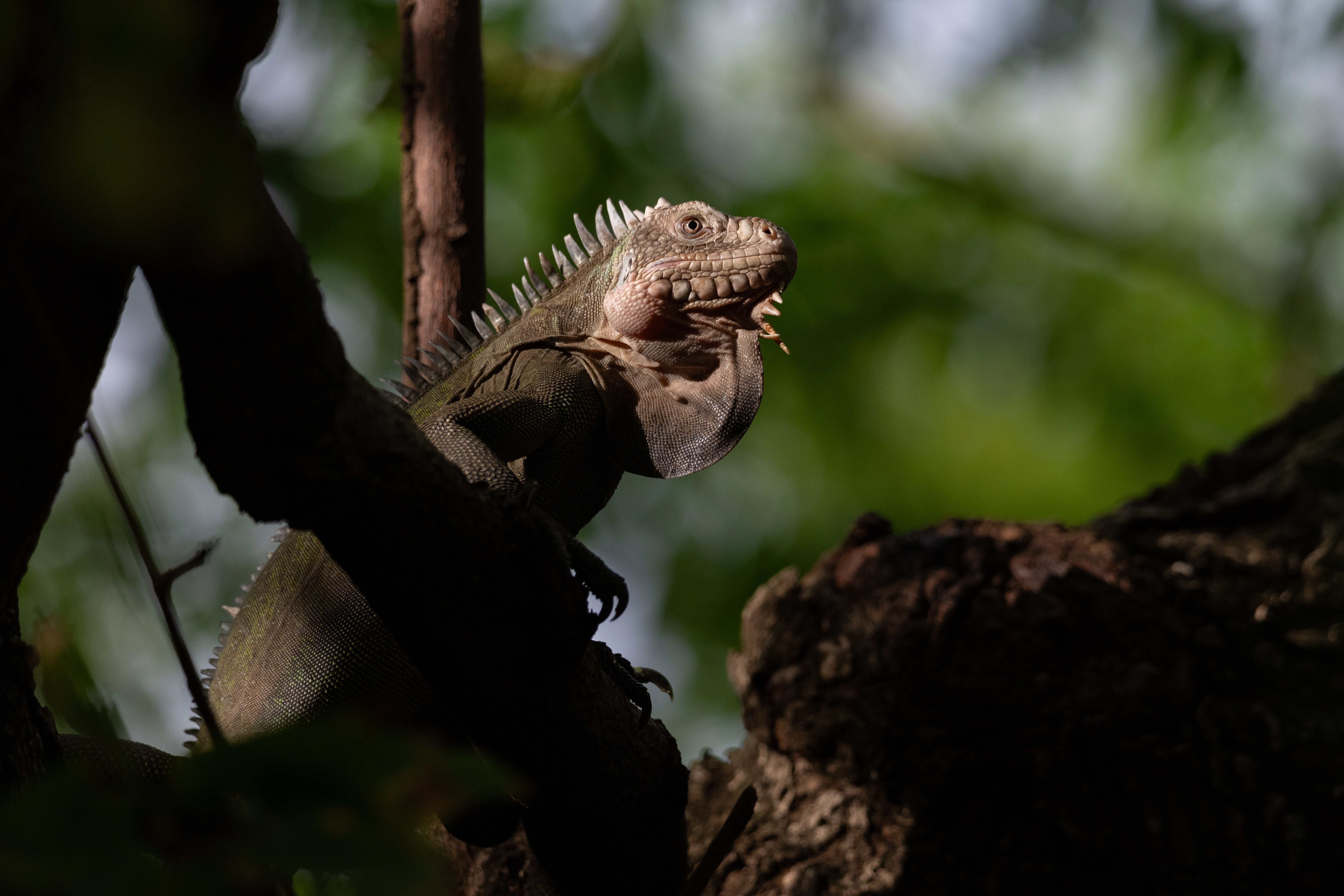For immediate release February 9, 2022 25 most wanted lost species: Artwork | Photos and illustrations Lost legends: Artwork | Photos and illustrations
Eight new wild and whimsical lost species from around the world have claimed a spot on Re:wild’s top 25 most wanted lost species list as part of the organization’s Search for Lost Species program—the Guinness World Record-setting quest to find and protect species lost to science. The new species replace those that have been rediscovered—often catalyzing conservation actions—since the program’s inception in 2017. They span species groups, geography and habitat, and include the most wanted list’s first fungus, arachnid, and lost species native to the United States.
“When we launched the Search for Lost Species, we weren’t sure if anyone would rediscover any of the wildlife on our most wanted list,” said Barney Long, Re:wild’s senior director of conservation strategies and a Search for Lost Species program lead. “Each new rediscovery has reminded us that we can find hope in even the most unlikely situations and that these stories of overlooked--but fascinating--species can be a powerful antidote to despair. We are looking forward to the next phase of this program, including documenting adventurous expeditions, identifying conservation opportunities, and, we hope, inspiring young conservationists and citizen scientists across the world to join the search.”
Here are the eight new lost species joining the most wanted list:
Fat catfish from Colombia (lost since 1957): The only freshwater catfish in the world with rings of fatty tissue wrapped around its body, described as “the closest a fish could get to the Michelin Man.”
Togo mouse from Togo and Ghana (lost since 1890): A ground-dwelling, insect-loving small mammal known locally as “Yefuli.”
Dwarf hutia from Cuba (lost since 1937): A guinea pig-like rodent that may have left behind some suspicious scat for researchers on the case.
South Island kōkako from New Zealand (lost since 2007): A bird with a haunting call that is often compared to the sound of a flute or the notes of an organ.
Blanco blind salamander from the United States (lost since 1951): A blind salamander living in underground aquifers in Hays County, Texas.
Fagilde’s Trapdoor Spider from Portugal (lost since 1931): An elusive spider that builds horizontal traps and tap dances to score dates.
Big puma fungus from South America (lost since 1988): Although not actually very big, this fungus has a doozy of a scientific name (Austroomphaliaster nahuelbutensis) and may represent its very own genus.
Pernambuco holly from Brazil (lost since 1838): A mysterious tree species that has somehow eluded scientists for nearly two centuries.
The most wanted lost species list is a subset of the more than 2,200 lost species (up from the 1,200 nominations in 2017) across 160 countries that Re:wild has compiled in collaboration with more than 100 experts from the IUCN Species Survival Commission’s specialist groups. Lost species are those that have been lost to science for at least 10 years—and often much longer. Between 2017 and 2020, at least 67 lost species nominated for this list have been rediscovered.
“The IUCN SSC is proud to be a key partner on the Search for Lost Species, which relies on local partnerships and is helping build a collective movement to protect biodiversity,” said Jon Paul Rodríguez, chair of the IUCN Species Survival Commission. “Species conservation is at the core of protecting our planet as a whole and addressing the triple crises of biodiversity loss, climate change and human health. The Search for Lost Species provides a guide for conserving some of the forgotten species most in need of help.”
The species on the updated top 25 most wanted list have been lost for an average of nearly 70 years. The Pernambuco holly has been lost the longest at 185 years, while the South Island kōkako had the most recent confirmed sighting—15 years ago. They come from 17 countries and include 10 mammals, four birds, four fish, two amphibians, and one coral, fungus, arachnid, tree, and reptile.
“The successful rediscovery of lost species is the first step toward preventing the extinction of these oft-forgotten species,” Long said. “Once a lost species has been found, conservationists are able to start answering critical questions about the size and health of its populations, threats to its survival, and solutions for its conservation and recovery. Our goal is for the Search for Lost Species to help catalyze conservation action that will not only help bring these species back, but that will help ensure a healthier planet overall.”
The first rediscovery, in 2017, of one of Re:wild’s top 25 most wanted lost species was the Jackson’s climbing salamander on the edge of a private reserve in Guatemala that Re:wild helped create in 2015. The finding spurred a successful fundraiser to expand the reserve’s borders, protecting not only Jackson’s climbing salamander, but two other lost-and-found salamander species.
Since the Re:wild-funded expedition that resulted in the rediscovery of the silver-backed chevrotain, another top 25 most wanted lost species, researchers have found two additional populations of the small tiptoeing, fanged deer-like species and are in the process of designing a conservation action plan with local partners.
And on the heels of the 2019 rediscovery of the Fernandina Galápagos tortoise on an expedition led by the Galápagos National Park Directorate and Galapagos Conservancy and supported by Discovery’s Animal Planet, Re:wild joined Turtle Conservancy in committing to supporting additional expeditions to Fernandina Island to determine if there are other individuals on the island and, if so, whether they are also Fernandina Galápagos tortoises.
“Lost species not only capture our imagination, but they have the power to teach us about the resiliency of the wild, the interconnectedness of ecosystems, and how best to implement conservation strategies that ensure these species—and the wildlife that shares their home—do not slip away forever,” said Robin Moore, Re:wild’s vice president of communications and marketing, a conservation biologist and a Search for Lost Species program lead.
In addition to rotating a new set of lost species onto the most wanted list, Re:wild has also launched a list of lost legends—lost species whose rediscoveries are long-shots at best and whose extinctions may have been recent, but that live on in society’s collective imagination and in some cases, regularly make headlines based on unconfirmed sightings. This list includes Australia’s Tasmanian tiger; the ivory-billed woodpecker, which the U.S. Fish and Wildlife Service recently declared extinct, from the United States and Cuba; Costa Rica’s golden toad; and China’s Yangtze River dolphin. To bring these species—which may not have ever been photographed—to life, artist and conservationist Tyler Thrasher illustrated them, incorporating what is known about their habitat in the illustrations.
In 2020, the Search for Lost Species program was awarded a Guinness world record for “most ‘lost species’ sought by a conservation project.”
Since the Search for Lost Species program launched in 2017, working with partners across the globe, Re:wild has confirmed the rediscovery of these original species on the list of top 25 most wanted lost species: Jackson’s climbing salamander in Guatemala, both the Wallace’s giant bee and the velvet pitcher plant in Indonesia, the silver-backed chevrotain in Vietnam, the Somali sengi in Djibouti, the Voeltzkow’s chameleon in Madagascar, the Fernandina giant tortoise in the Galápagos, and the Sierra Leone crab in Sierra Leone.
Additional quotes
Nigel Babbage, chair of the South Island Kōkako Charitable Trust “Recovering the South Island kōkako, one of New Zealand’s ancient wattlebird species, is a duty of care we have to ourselves as Kiwis and to global biodiversity. Our immediate priority is to determine where it might survive in our vast southern forests. We want to restore its transcendently beautiful calls to the chorus of native birdsong. We are immensely encouraged in this task by the international recognition our bird will receive through Re:wild’s inspiring 25 most wanted lost species campaign and the many successes this campaign has already achieved.”
Michael Edmondstone, communications and engagement lead for Shoal “Having the mysterious fat catfish included on Re:wild’s 25 most wanted list highlights what an extraordinary species this is. With its bizarre appearance and the limited available information about it, the Shoal team is tremendously excited by the prospect of the fish being found. Everybody is hoping to learn more about it and, ultimately, put the right measures in place to ensure it can thrive for future generations.”
Giuliana Furci, founder and CEO of the Fungi Foundation “There are organisms that live underground that are constantly enabling the life of trees in anonymity. Such is the case of this endemic fungus, the big puma Nahuelbuta Austroomphaliaster, of the temperate rainforests of Southern Chile. Fungi are as threatened as plants and animals, unfortunately.”
Andrew Gluesenkamp, director of conservation at the San Antonio Zoo “The Blanco blind salamander has achieved near-mythical status among herpetologists, cave biologists, and conservationists. The unusual circumstances of its discovery and apparent inaccessibility, despite proximity, tease that the next major discovery may be only an accident away. In addition, this is not the only poorly known, elusive, and bizarre groundwater vertebrate known to occur in the Edwards Aquifer. Researchers continue efforts to document and study two species of blind catfish known only from deep wells around San Antonio. What other species remain to be discovered below our feet?”
Sergio Henriques, invertebrate conservation coordinator for the Global Center for Species Survival, and co-chair of the IUCN SSC Spider and Scorpion Specialist Group
“Having Fagilde’s trapdoor spider join the 25 most wanted lost species fills me with hope. Because attention is often drawn towards large charismatic species, showing how invested the international community is in finding and protecting some of the world’s most remarkable—but humble—species, like trapdoor spiders, feels like a tremendously important precedent to set for future conservationists. Having this level of international attention, supported by such a prestigious organization, will not only mean we can finally dedicate resources to better understand a species that hasn’t been recorded since it was first described (nearly a century ago), but it will also highlight to decisionmakers how remarkable the region’s wildlife is, something local people have long felt but rarely had a chance to see on the world stage.”
Rosalind Kennerley, co-chair of the IUCN SSC Small Mammal Specialist Group “It’s incredible to think that the Togo mouse has not been recorded since its discovery at the end of the 19th century. There have been a couple of unsuccessful searches for it, but we hope that with an expedition that will use improved field sampling methods, we might find that the Togo mouse is still out there.”
Natalia Rossi, Cuba country director for Wildlife Conservation Society (WCS) “Searching for the dwarf hutia means reviving an iconic species in the country. The search efforts for this tiny rodent, unique to Cuba, have resumed only recently. We are thrilled to get into the remoteness of the Zapata Swamp using old and new methods to track and find this enigmatic and cryptic species. For a country proud of its enormous levels of endemism –discovering new species or finding those elusive ones are a matter of national pride and scientific awe!”
Tyler Thrasher, artist, conservationist and lost legends illustrator “Art can be used as a vessel to communicate ideas regarding nature to our fellow humans. In fact, I believe most creativity can be traced back to interactions with the natural world, so it’s only fitting artists help play a role in species conservation and similar scientific endeavors. We have the liberty to collaborate with nature and use our observations to communicate the importance of preserving it, protecting it and continuing to learn from it, especially regarding species most humans will never witness and species with little to no photo evidence; just bones, tracks, and surrounding clues. As a nature-inspired artist, it’s our job to take those pieces and bring them together to tell one important story of preservation, conservation and redirecting our current trajectory.”
# # #
Photo: New lost species from bottom left clockwise: Dwarf hutia, fat catfish, Fagilde’s trapdoor spider, South Island kokako, Pernambuco holly, big puma fungus, Togo mouse, and the blanco blind salamander. (Artwork by Alexis Rockman) 25 most wanted lost species: Artwork | Photos and illustrations Lost legends: Artwork | Photos and illustrations
Re:wild Re:wild protects and restores the wild. We have a singular and powerful focus: the wild as the most effective solution to the interconnected climate, biodiversity and human health crises. Founded by a group of renowned conservation scientists together with Leonardo DiCaprio, Re:wild is a force multiplier that brings together Indigenous peoples, local communities, influential leaders, nongovernmental organizations, governments, companies and the public to protect and rewild at the scale and speed we need. Learn more atrewild.org.

Devin Murphy
Writer
Devin Murphy is Re:wilds’s senior communications specialist and helps Re:wild and its partners tell stories about the work they do to protect wildlife and wildlands around the planet. Her favorite stories about conservation include fascinating and little-known species and the dedicated humans protecting them.




